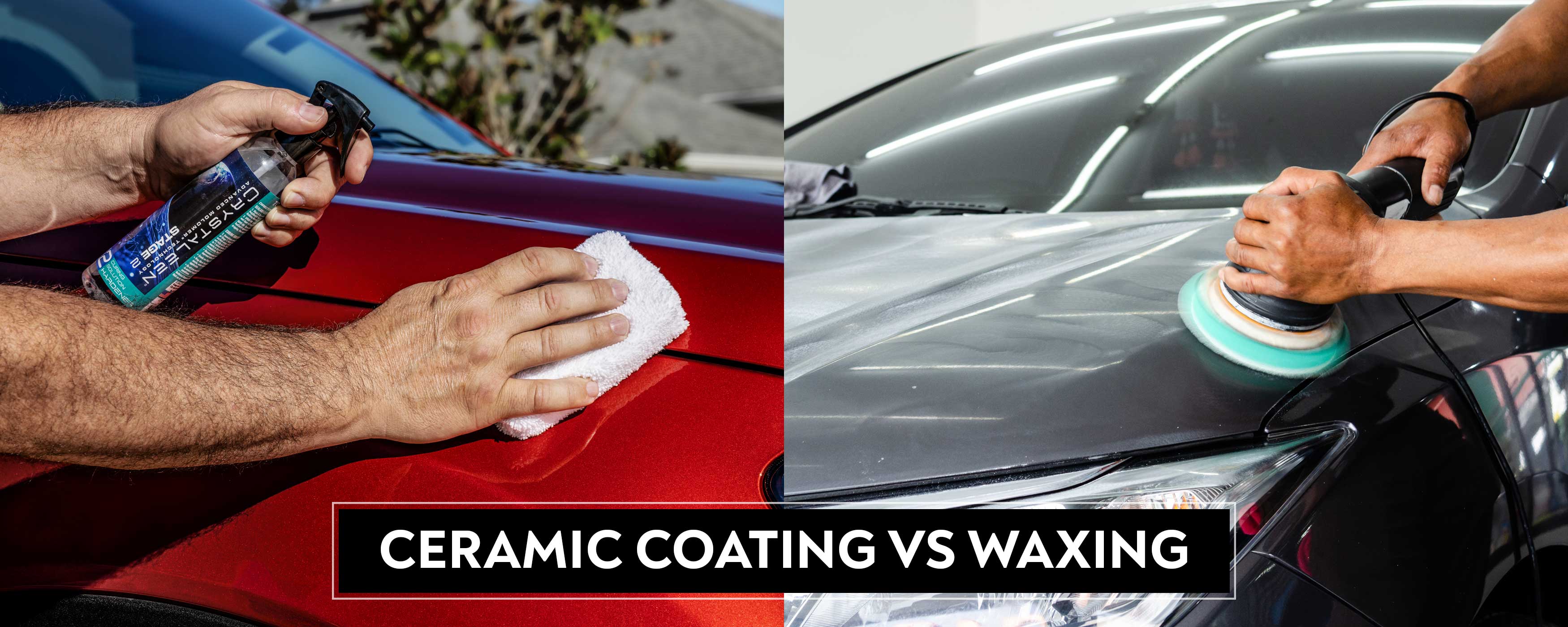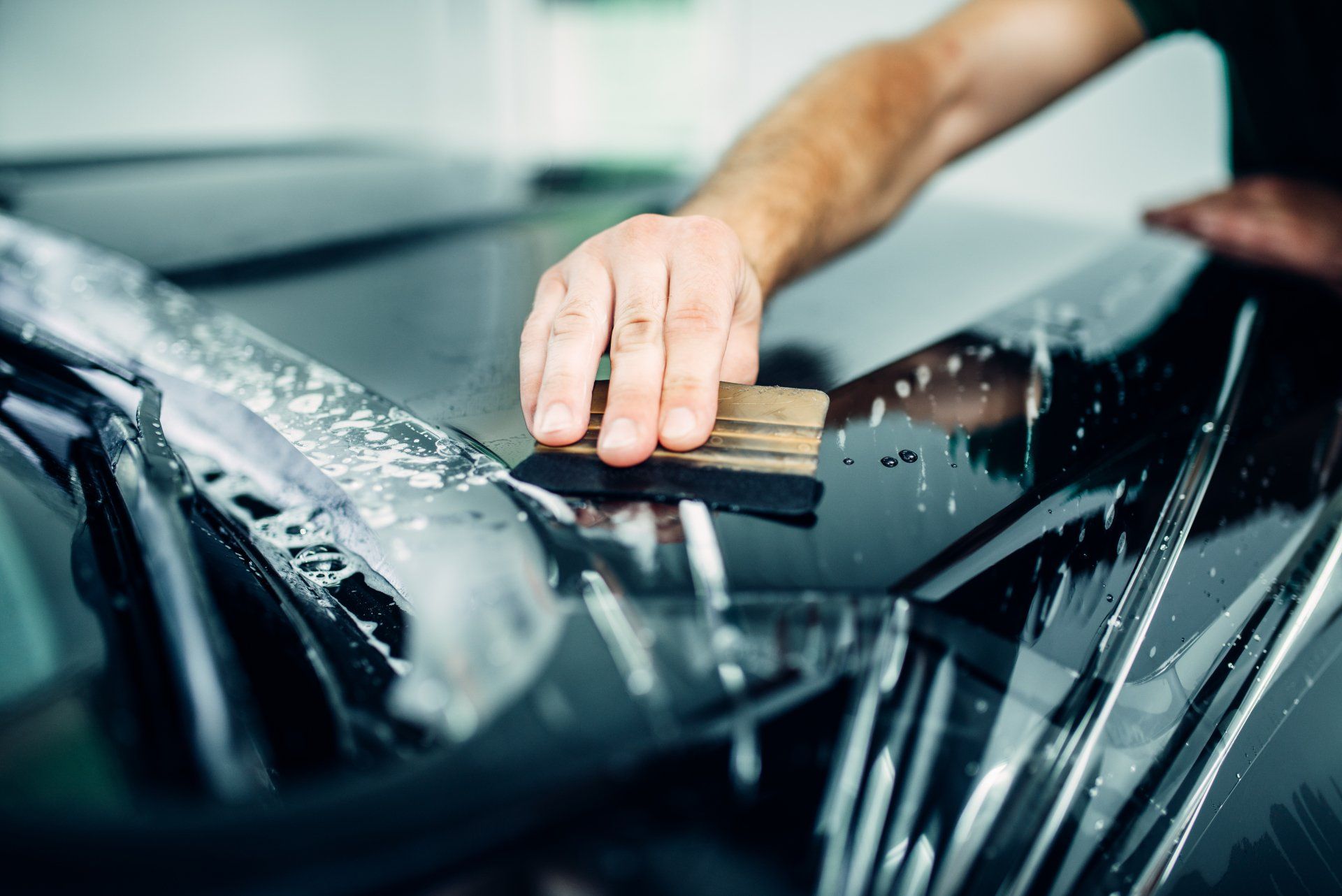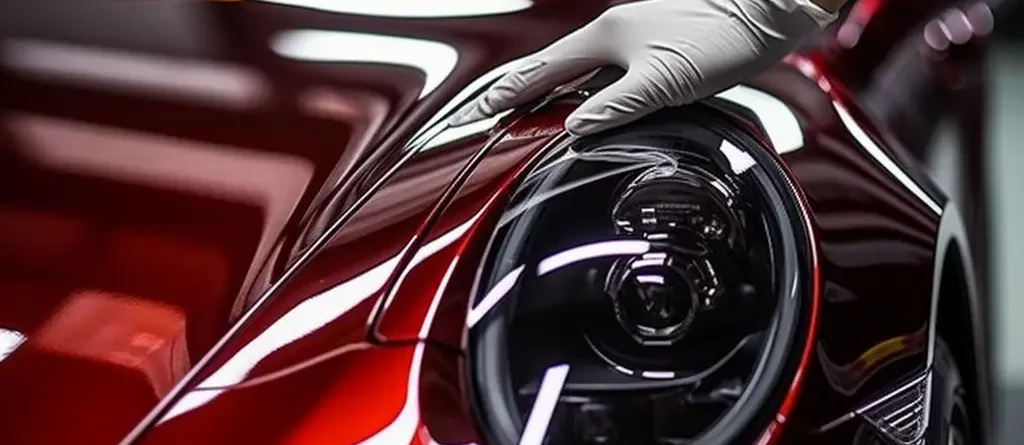Ceramic Coating: The Future of Automotive Surface Protection
Ceramic Coating: The Future of Automotive Surface Protection
Blog Article
Ceramic Covering vs. Standard Wax: Which Provides Better Long-Term Protection?
The dispute between ceramic coatings and typical wax for vehicle security has actually garnered significant focus among automobile fanatics and specialists alike. While both offer the purpose of securing paint, their distinctions in toughness, application, and long-term upkeep costs may affect a customer's option. Ceramic layers boast premium long life and resistance to ecological elements, yet the complexity of their application increases inquiries about accessibility and functionality. As we explore these contrasting choices, it becomes necessary to think about not only the instant advantages however likewise the implications for lorry care over time.
Review of Ceramic Finish
Ceramic layer has gotten significant appeal amongst automotive fanatics and detailers alike because of its advanced safety high qualities. This innovative modern technology is made to create a long lasting, hydrophobic guard over a car's paint surface, substantially boosting its resistance to environmental pollutants such as dust, UV rays, and chemical stains. Unlike traditional wax, which gives a short-lived layer of security, ceramic coverings bond at a molecular degree with the paint, providing lasting durability-- often extending beyond two years with appropriate maintenance.
The application procedure entails thorough preparation of the automobile's surface, consisting of cleaning and brightening to ensure ideal adhesion. When used, the coating treatments to create a durable layer that not just includes deepness and gloss to the paint however also streamlines upkeep. With its hydrophobic homes, ceramic covering enables water and dust to move off even more conveniently, minimizing the regularity of cleans and reducing the danger of swirl marks.
Furthermore, ceramic finishings are offered in different formulas, enabling users to pick products customized to their particular requirements and choices. On the whole, ceramic layer stands for a substantial improvement in paint security modern technology, supplying exceptional performance contrasted to standard alternatives.
Review of Conventional Wax
Traditionally pertained to as a staple in automobile treatment, wax functions as a preferred choice for those looking for a straightforward method to boost and shield their vehicle's paint - ceramic coating. Automotive wax usually comprises all-natural active ingredients, such as carnauba, or artificial substances, designed to develop a protective layer externally of the paint. This layer not only boosts the vehicle's gloss and radiate but also supplies a barrier against ecological pollutants
The application of wax is generally straightforward, making it available for both specialists and do it yourself enthusiasts. It can be applied by hand or machine, enabling versatility in the describing procedure. Once applied, wax needs a curing duration, after which it solidifies to create a protective shell. Wax is also recognized for its capability to repel water, advertising a beading result that assists in the prevention of water areas and rust.
Nevertheless, while wax is reliable for enhancing the aesthetic charm of a car, it is essential to note that the defense it supplies may necessitate more frequent reapplication compared to different products, such as ceramic coatings. Generally, traditional wax remains a popular choice for those prioritizing ease of usage and prompt visual improvement.
Resilience and Longevity Comparison
While both ceramic finishings and conventional wax deal protective benefits for vehicle paint, their toughness and long life differ substantially. Conventional wax, generally made from all-natural carnauba or artificial polymers, generally gives a safety layer that lasts roughly 3 to 6 months. This reasonably brief lifespan necessitates routine reapplication to preserve optimal defense.
On the other hand, ceramic layers are crafted from sophisticated nanotechnology, creating a covalent bond with the paint surface. This results in a durable, hydrophobic layer that can withstand for 2 to 5 years, relying on the product and ecological problems. The exceptional sturdiness of ceramic layers is associated to their chemical structure, which supplies boosted resistance to scratches, UV rays, and oxidation.

Security Versus Environmental Elements
Safeguarding a car's paint from environmental aspects is critical for maintaining its appearance and worth gradually. Cars are frequently exposed to a variety of components, including UV rays, bird droppings, tree sap, acid rain, and roadway grime, all of which can endanger the integrity of the paintwork.
Ceramic layers more info here give a robust defense versus these environmental aggressors. Unlike standard wax, which can deteriorate swiftly under UV direct exposure, ceramic coatings form a long lasting, hydrophobic layer that withstands the dangerous results of sunlight and toxic wastes. This innovative innovation creates a chemical bond with the car's surface area, offering superior defense that lasts for years, even in severe conditions.
Typical wax, while much easier to apply, usually requires regular reapplication and uses minimal resistance to pollutants and UV rays. With time, it can break down, leaving the paint at risk to scrapes and oxidation. In comparison, ceramic finishes preserve their safety top qualities longer, considerably lowering the risk of paint damage and making certain that the vehicle retains its visual charm. Because of this, ceramic finishes are increasingly recognized as the premium choice for long-lasting security versus environmental variables.
Application and Maintenance Differences
The techniques of application look at more info and subsequent maintenance for ceramic finishings and standard wax differ dramatically, impacting the overall individual experience and effectiveness of each product. Ceramic coatings need an even more detailed application process, usually entailing surface prep work that includes cleaning, sanitizing, and polishing the car. As soon as the surface area is all set, the ceramic finishing is used in a controlled environment, frequently requiring specialist competence to make sure proper treating and bonding to the paint.

While both items enhance automobile appearance, the longer-lasting security provided by ceramic coverings may warrant their preliminary financial investment, despite the more demanding application procedure. On the other hand, typical wax stays a popular choice for those looking for a less complex, albeit temporary, option.

Conclusion
In final thought, ceramic layers demonstrate substantial advantages over typical wax in terms of longevity and ecological security. With a lifespan expanding two to 5 years and superior resistance to UV rays, dirt, and chemical discolorations, ceramic layers offer a much more effective remedy for long-term automobile upkeep. Although the application process might call for professional knowledge, the resulting cost financial savings and decreased frequency of reapplication highlight the value of ceramic coatings for those looking for optimum vehicle protection.
The discussion in between ceramic finishes and traditional wax for car defense has actually amassed considerable focus among auto enthusiasts and professionals alike. Unlike standard wax, which supplies a momentary layer try these out of defense, ceramic finishings bond at a molecular level with the paint, providing resilient resilience-- typically expanding beyond two years with proper upkeep.
While both ceramic coverings and typical wax deal safety advantages for automotive paint, their durability and durability differ dramatically. For automobile enthusiasts seeking lasting security, ceramic coverings offer a compelling benefit over standard wax products.
In verdict, ceramic finishings show considerable benefits over conventional wax in terms of toughness and ecological defense.
Report this page